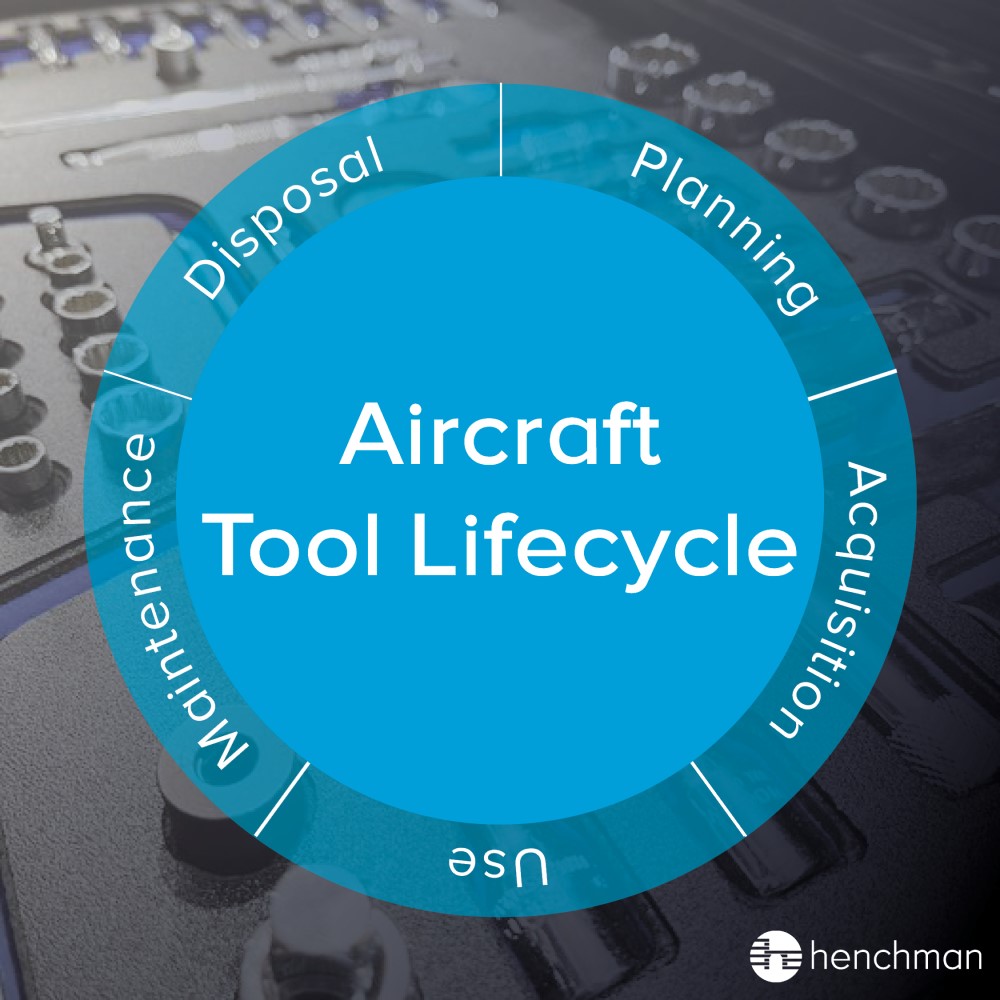|
Henchman |

|
|---|
Streamlining Aviation Tool Lifecycle Management
Feb 27, 2024

Streamlining Aviation Tool Lifecycle Management
In the ever-evolving landscape of aviation, characterized by economic uncertainties, limited budgets, and fluctuating labour markets, businesses are increasingly seeking ways to enhance predictability and cost-effectiveness in their operations. One pivotal strategy is the adoption of smart asset management systems, particularly in the realm of aviation tool control.
By incorporating intelligent asset management best practices, organizations can standardize and streamline volatile equipment-related costs, enabling informed purchases, prolonging the lifespan of critical equipment, and ensuring the availability of tools for essential operations.
This article delves into the integral role of smart asset management technology as a core component of aviation Asset Lifecycle Management (ALM). We explore the optimal structuring of an ALM program, investigate the integration of an equipment management system, and highlight specific benefits.
Understanding the Aviation Asset Lifecycle
Before delving into the advantages of smart asset management, it's crucial to grasp the concept of an asset lifecycle. In the aviation context, an 'asset' refers to any physical object whose absence could significantly impact operational workflows and cause aircraft downtime. Take, for instance, a specific tool in a maintenance hangar – a tool indispensable for operational efficiency.
The asset lifecycle encompasses all activities from the initial decision to procure the asset to its eventual disposal, emphasizing a comprehensive approach from inception to retirement.
The Significance of Tool Lifecycle Management
Efficiently managing each asset's lifecycle is paramount to maximizing availability, effectiveness, and longevity. Implementing lifecycle management practices involves efficient purchasing, regular maintenance, and strategic utilization, ensuring optimal value extraction at every stage.
Key Stages of the Aircraft Tool Lifecycle
 Planning: The initiation of the planning stage occurs when authorized decision-makers identify the need for new assets – tools, equipment and tool kits. Researching available assets and suppliers, gathering maintenance staff input, and conducting internal reviews and approvals before placing an order are crucial aspects of this phase.
Planning: The initiation of the planning stage occurs when authorized decision-makers identify the need for new assets – tools, equipment and tool kits. Researching available assets and suppliers, gathering maintenance staff input, and conducting internal reviews and approvals before placing an order are crucial aspects of this phase.- Acquisition: The acquisition stage involves obtaining the selected asset, necessitating careful planning for delivery and deployment. Asset intake processes, inventorying, owner assignment, and equipment tracking become integral components.
- Use: Assets are put into operation during this stage. Monitoring ongoing asset use, preferably through enterprise asset tracking features or manual methods, is essential for optimizing performance and being compliant to tool control regulations.
- Maintenance: Identifying a suitable maintenance strategy and scheduling relevant checks before an asset enters general use is key. Preventive maintenance or routine calibration renewal for torque wrenches ensures prolonged effectiveness.
- Disposal: The end of an asset's lifecycle prompts decisions regarding disposal, while adhering to industry and environmental guidelines. Evaluating the need for replacement launches a new asset lifecycle from the planning stage.
Integrating Smart Asset Management in Aviation Tool Control
A Smart Asset Management System, such as automated electronic tool control solutions like HenchmanTRAK, can revolutionize your ALM. Features like self-management, automated transactions, tracking, and centralized management dashboards contribute to enhanced efficiency, reduced costs, and optimized decisions.
Key Components of a Smart Asset Management System:
Storage Solution:
Each storage unit hold idle tools, tool kits and equipment, ensuring they kept safe and ready for use. Units can vary in size and functionality, from assets stored centrally in a toolcrib, to drawer cabinets as well as portable tool kits stored in pigeonholes and lockers at the point of use.
Access Control:
Limiting access to the storage to authenticated users, these card readers unlock designated cabinets based on user permissions. The completion of quality control checklists can be included in this step, including checking the general tool condition and calibration dates before each issue.
Content Tracking:
Sensors in drawer cabinets, RFID tags, barcodes and even weight checking ensure the accurate asset issue and return, providing real-time insights into asset utilization.
Management Dashboard:
All data collected is sent to and stored on a centralized remote cloud dashboard accessible via a secure login, offering real-time monitoring, user management, and comprehensive reporting.
Benefits of Aviation Tool Lifecycle Management Using a Smart Equipment Management System:
Improved Operating Efficiency:
Automation of asset transactions and consistent, error-free processes contribute to enhanced efficiency, allowing staff to focus on more productive tasks, while reducing the chance of human error.
Reduced Cost:
Streamlined operations, effective lifecycle management, and automated maintenance schedules lead to reduced operating costs.
Informed Decision-Making:
Comprehensive lifecycle management uncovers valuable insights, enabling organizations to make informed decisions about asset use and operational improvements.
Extended Asset Lifecycles:
Real-time tracking facilitates optimal maintenance scheduling, allowing organizations to maximize the lifespan of assets and control their distribution.
Decreased Downtime:
Adhering to maintenance schedules and built-in charging capabilities minimize unexpected downtime, ensuring seamless operations.
Compliance:
In addition to being compliant with Part 145 Tool Control regulations, for organizations following ISO 55000 asset management standards, an automated asset management system aids in compliance, providing electronic management tools and data for continuous improvement.
In conclusion, integrating a Smart Asset Management System in the form of Electronic Tool Control into your Aviation Tool Lifecycle Management not only ensures operational resilience but also paves the way for strategic decision-making, cost reduction, and prolonged asset effectiveness. Embracing these technological advancements is the key to navigating the dynamic landscape of aviation tool control in the modern era.





